I went into the field of plant ecology research because I love plants and the places they live in. Through scientific training, I wanted to know the natural world in a new way, complementary to what came naturally to me (observation, aesthetic appreciation, Anne Shirley-esque raptures). I also wanted to contribute to the global conservation effort, and science seemed like a way I could do that. I’m still finding my way in science and how to do good with it, but in the meantime my native storytelling urge has found its way into my research—and sometimes I think storytelling might be some of the best good we can do. So last year I wrote some poems inspired by my PhD research on New Zealand mountain plants for the Cambridge Festival (an annual event celebrating research and ideas of all kinds). I want to share them here in honor of Earth Day.
For some background, here’s a Festival blurb about my PhD research:
My PhD research asked how mountains generate biodiversity. The challenging habitats and rocky barriers of mountains can drive plants to evolve new species, which may be key for the highly diverse hebes (“hee-bees”, genus: Veronica), a group of over 120 flowering shrub species native to New Zealand. Hebes grow in many habitats, from lowland riverbeds to alpine slopes, but especially in the mountains. My evolutionary modelling research showed that hebes evolved more species in the mountains than in the lowland over the last 4 million years. Most mountain species evolved within mountains, with only a few species migrating from the lowland. This demonstrates the evolutionary potential of mountain habitats, a crucial source of biodiversity both over evolutionary timescales and in the context of climate change.
And a Festival blurb about the poems:
These poems inhabit the world of alpine plants from many vantage points, ranging from field botanist to evolutionary biologist to the plants themselves, from nooks and crannies in cliffs to the lab, from the wide sweep of evolutionary time to the precariousness of the future. My hope is to share the intimacy and multi-dimensional wonder of close observation of plants and to spark curiosity about the work that goes into reconstructing and imagining plants’ evolutionary past and future. This kind of curiosity is crucial for investing in the conservation of these plants and their ecosystems—and also enriches our lives.
Enough talk; on to the poems. Note: some of them are best viewed on a desktop screen. You can also listen to me read the poems.
Listen to Field Guide to New Zealand Veronica
Field Guide to New Zealand Veronica Hunting hebes, you climb east-facing cliffs scramble rocky river gorge hike to treeline through sparse mountain scrub. Phyllotaxis: decussate that is, look for leaf pair rotate right angle leaf pair again, again, again, squared-off spiral up the stem jazzy ladder to diamond leaf bud waiting to spring and spread into more rungs. Find rock shelf, crevice, seepage pick your way up scree slope look for limestone outcrop or margins of ephemeral alpine pool. Inflorescence: simple lateral raceme of crowded, spiralled, pedicellate flowers that is, find fountain and froth of flowers four white lobes framing demurely the shock of hot pink anthers where the pollen calls and the green-nestled ovules waiting to swell into capsuled fruit. Range through fellfield, herbfield streamside, rockslide tussock grassland, cloud forest coastal bluff, bare greywacke road cutting, bog, sand, beech shade, snowbank— Take the leaf-ladders and the froth-flowers and the rock-hound roots shrink them to cushions spin them out to long-leafed trees round them down to springy shrubs press them into rawhide whipcords spread them through golden grass tuck them into cracks— huddle in the cold, reach for the light wander alone between rock walls for five million years and find one-hundred-and-more variations on a theme. If you loved rock and light like a hebe with all New Zealand to hide in, where would you go? What would you be?
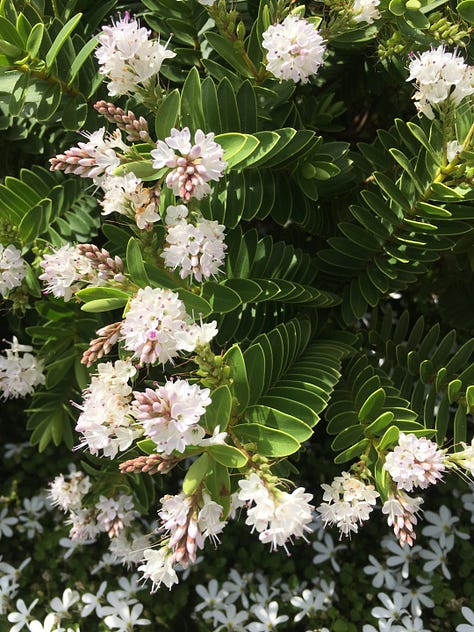
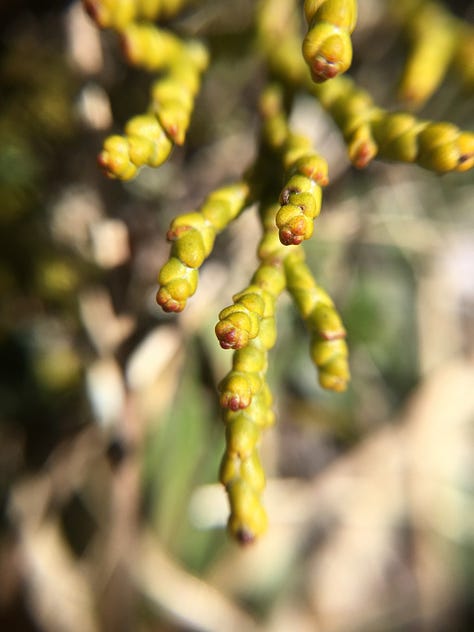
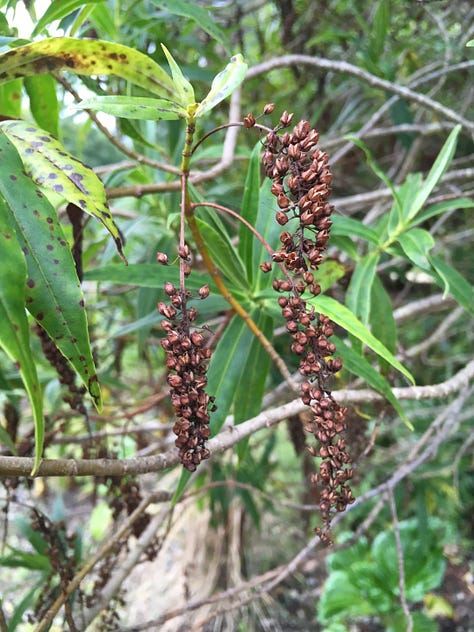

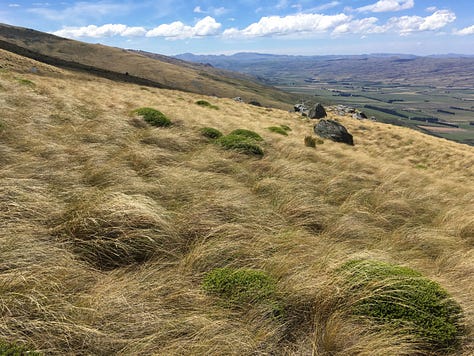
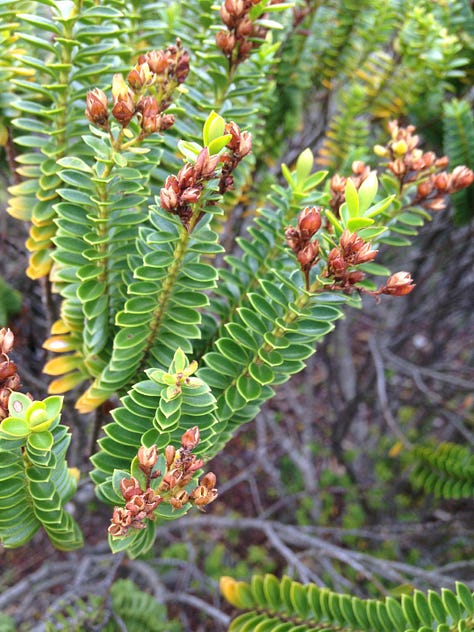
Listen to Phylogeny, aka A Leaf Has a Long Memory
Phylogeny, or A Leaf Has a Long Memory Look at this leaf firm on its springy stem squeezed where a seed lodged in a limestone crack after a capsule popped on the plant rooted in rock above where a bee brought pollen from over the cliff and the chromosomes found each other. Pluck this leaf to harvest chromosomes coiled with leaf-code, stem-code, rock-rooting code an inheritance latticed with accidents: A flipped to T, G slipped to C, refolded proteins or silent jots-become-tittles tell the story to be laid open in the leaf. Look at the leaf crushed to dust in the test tube ready for the chemical alchemy of centrifuge and pipette, enzyme and heat: essence unfurled, swirled, chopped and copied until a mountain is made of a molehill of leaf-letters. Look at the letters aligned and inscrutable on the screen pieced together by computer algorithm sleuthing the deep-buried footnotes of leaf— ribosome, hormone, the space between— leaf-cousin by leaf-cousin, their cascade of edits sifted side-by-side into snippets of sense. Trace the branches spun from crushed leaves and leaf-letters and mathematical model ticking back time pressing into lines the slow drama of glaciers calving and halving ranges, the bee-flow of pollen, chromosomes doubling, leaves finding new shapes and new branches on the family tree. A leaf has a long memory. We do our best to tease it free.
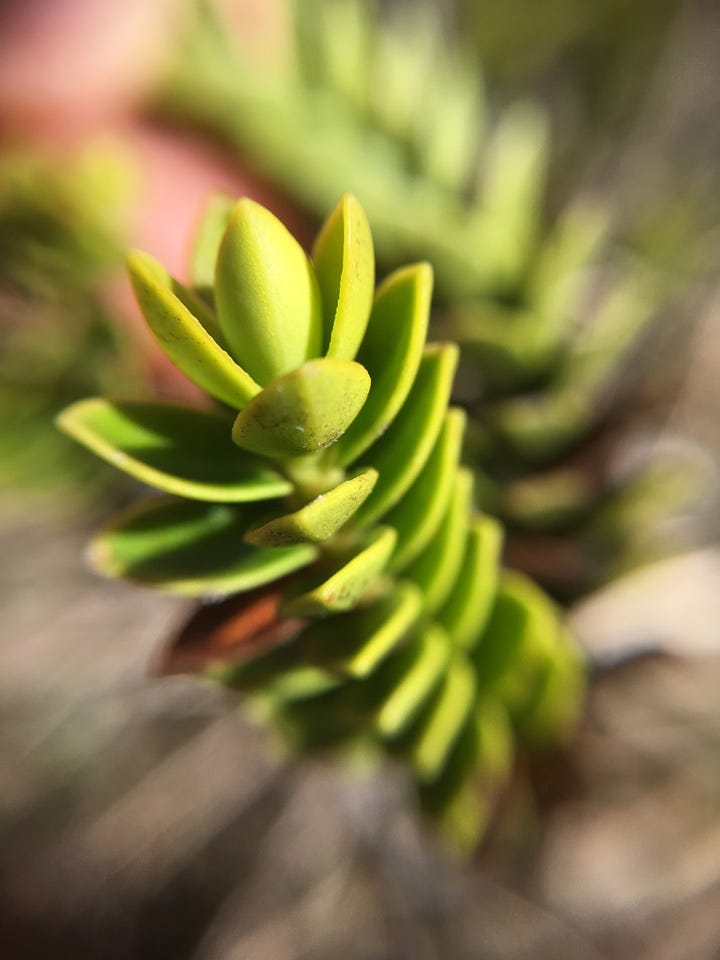
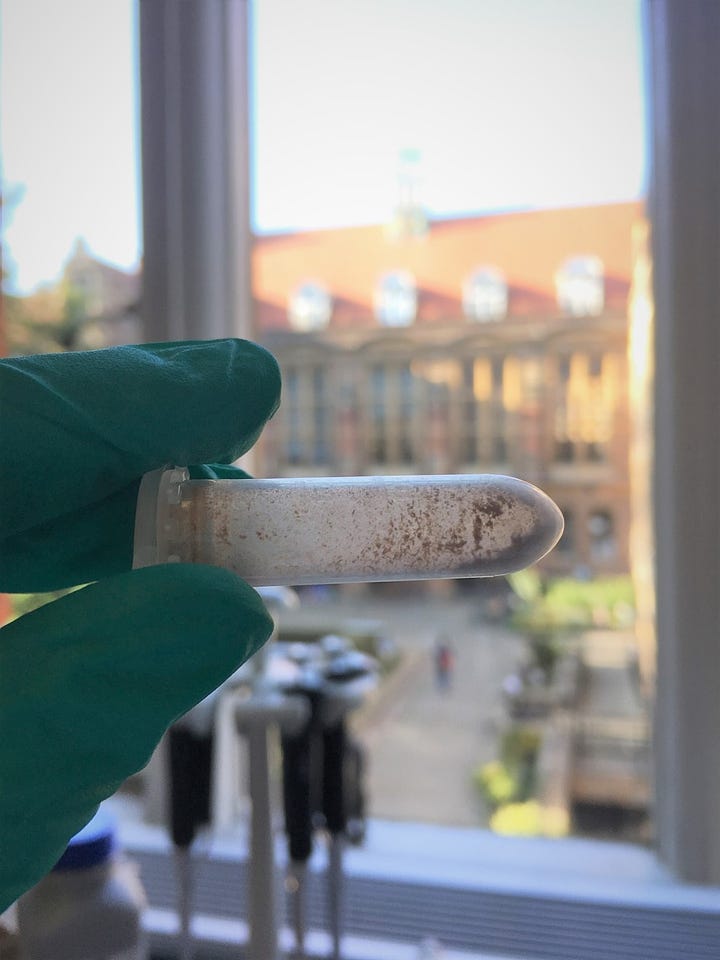
Listen to Alpine Elegy
Alpine Elegy
I am alpine.
I hunch and hug the ground
where the wind sears
and summer is too cold for trees.
I like it here.
I’m found nowhere else.
My ten-millionth-great grandparents
clung to coastal rocks
when the land was low and warm
blanketed in beech shade.
Lifting land meant shifting luck
for their children:
new rocks, wind, and light.
They climbed.
After mountains rose,
glaciers descended.
My ancestors were ice-dodgers
as the crush heaved down and up
their home-slopes.
They sent out seeds
with luck and pluck.
Some survived.
It’s been quieter.
For ten thousand generations
my kin and I have calibrated
to this high band of land,
its stable chill, its harsh peace.
The alpine made us.
We made it our own.
But I sense change in the wind—
winter losing its edge
snow blanket growing bare
shady strangers creeping in
no longer kept at bay by freeze.
I will my children upslope.
I hope I gift them lucky genes.
And when they find only sky?
A final bonus: Pedagogy, a poem I read at the 2022 Cambridge Festival Botanic Garden poetry reading, in situ at the Cambridge University Botanic Garden. Not related to my PhD research, but certainly to storytelling.
Pedagogy
Trees taught me poetry
master spinners of light and air
that they are.
I remember when the redwoods
poured their night-song into my soul
while I lay in a tent in a grove
that grew in all directions in the dark
showing my cells
how to lengthen
and stack
making shafts
for the sun
to reach
down
down.
The next day I went looking
and found wood crumbling red
in the jaws of ants
carefully carrying home the sun.
May you learn from Earth today!

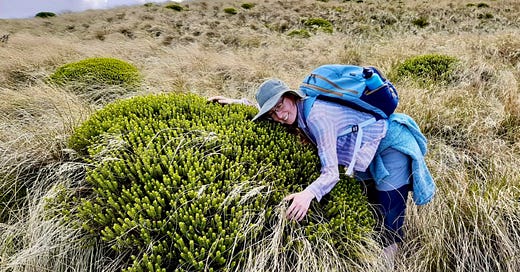



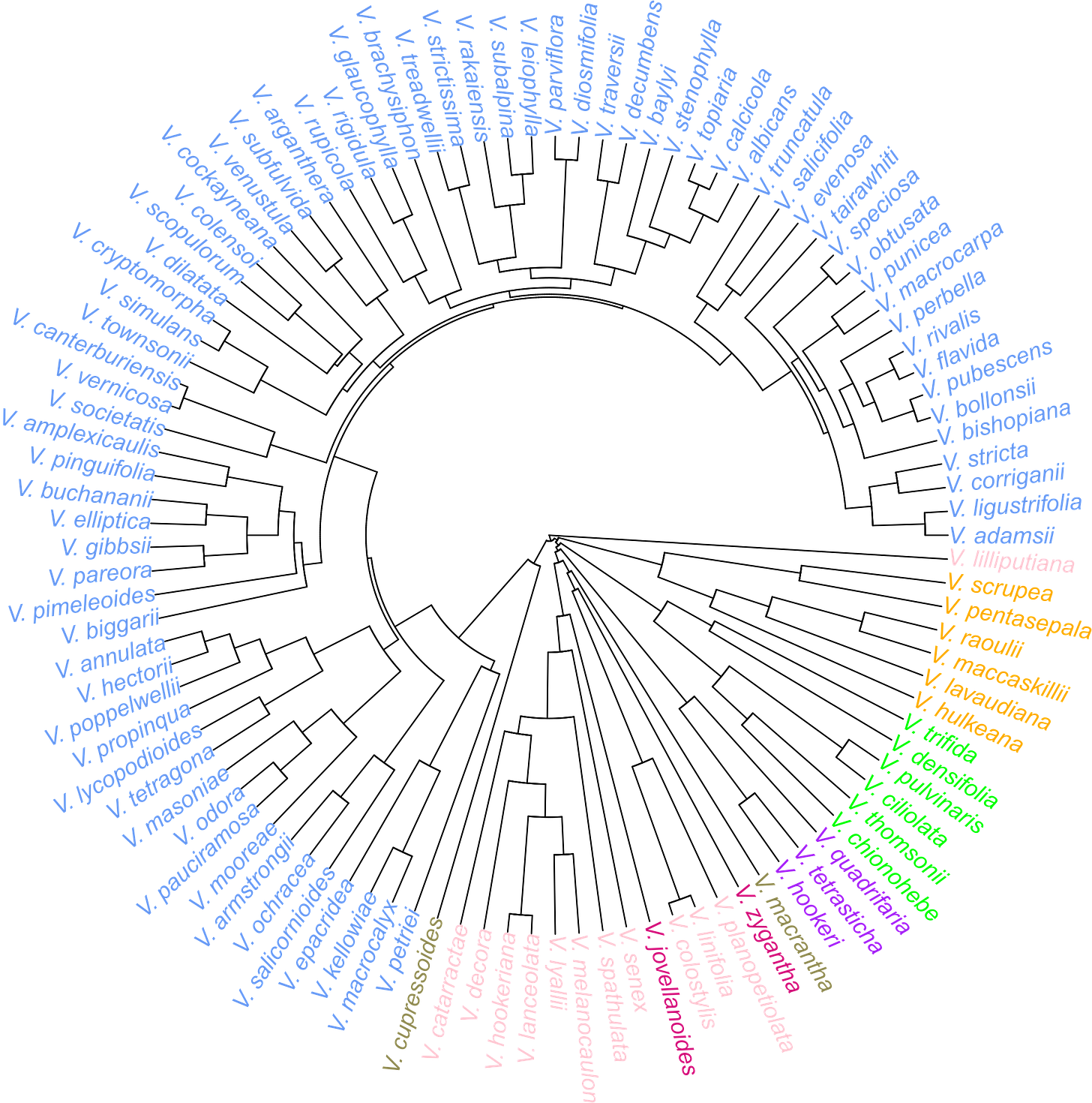
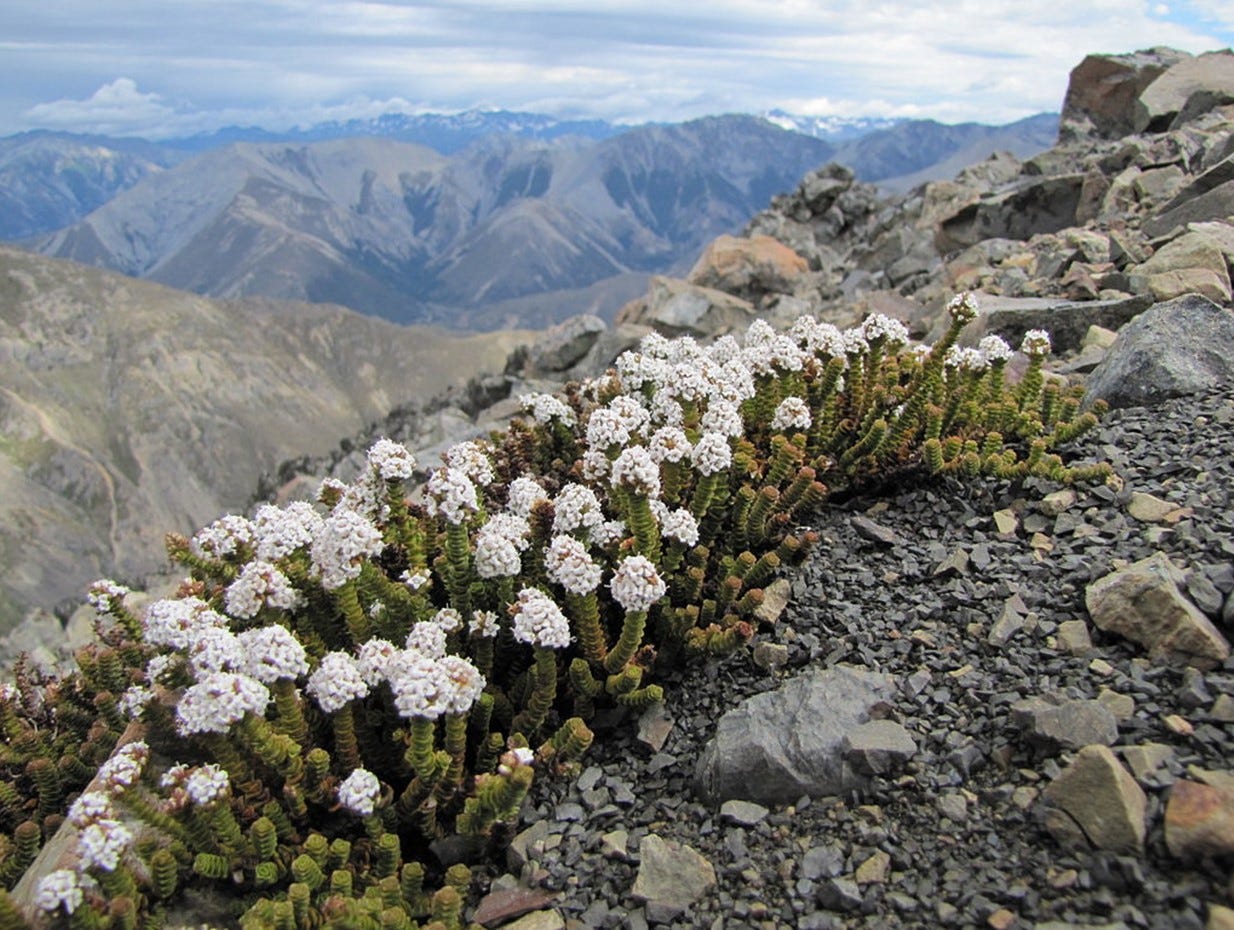
Lovely poetry, Anne. It was fun to hear you read them!
Aww thanks Kathleen, and I salute you in your perseverance to combat plant blindness! Other stuff is cool too but plants are definitely underrated!